Today could be your greatest glory. It also could be the day you breathe your last in the Roman Empire. The other gladiators stand at opposite corners of the ring brandishing their weaponry. Your pulse quickens. The pounding in your ears is overcome by the frenzied roar of the crowd. Gaining their favor will be almost as advantageous as a swift gladius. The sand beneath your sandals thirsts for blood. You pray to the gods it’s not your own.
Welcome to Carthage.
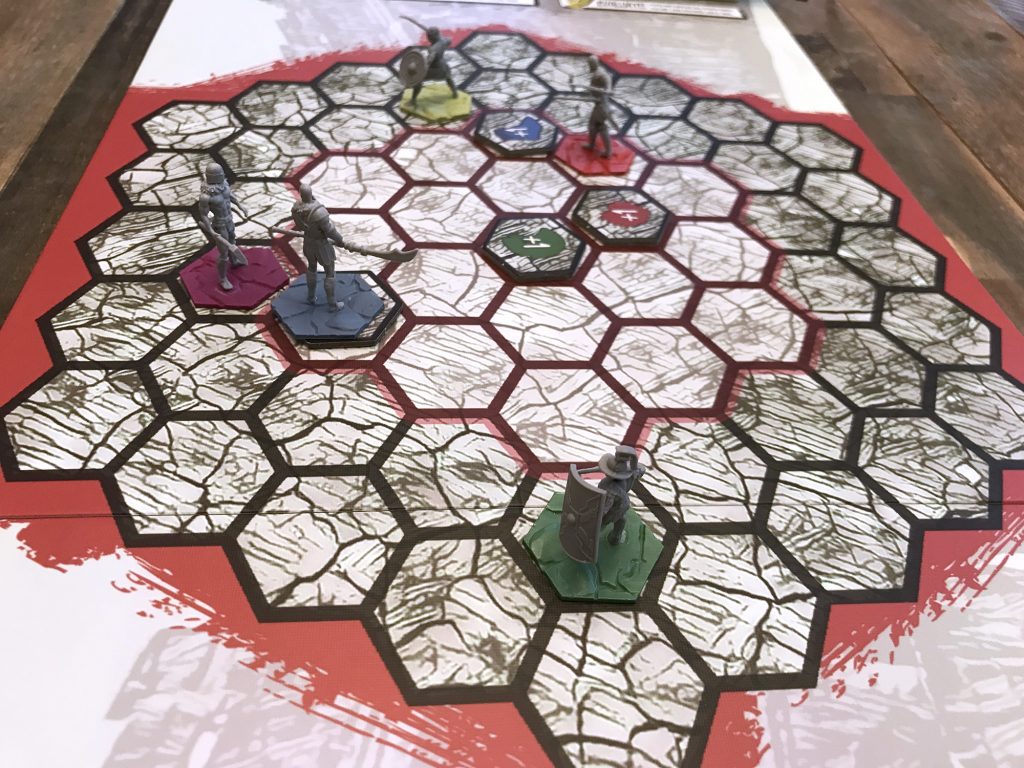
Carthage is a board game designed by Luke Seinen and published by SAS Creative that combines deck-building mechanics with arena combat miniatures gameplay. The modular ruleset allows for 1-5 players in competitive and cooperative modes.
For Those About to Deck-Build, We Salute You!
While Carthage has a variety of modes to play, the meat n’ bones is found in the competitive free-for-all mode. The lion’s share of this review will cover this mode of play. Speaking of lions, it’s possible to add lions into the game (more on that later)!
In Carthage, all players start with matching decks of 10 basic cards, shuffled and placed facedown on their player board . Everyone begins the fight with 15 armor (representing your health), which is tracked across the top of their board. Players also start with 0 favor which will serve as buying power for more cards. There is a 5-card “market” of Action cards set to one side of the board. The other side of the board contains the Theater deck, which will be explained shortly. Each player’s miniature is placed on the outside edge of the hex-filled board. Once the combat begins, players use their deck to maneuver their gladiator and attack their opponents. Successful strikes reduce their armor and the last gladiator standing wins the game.
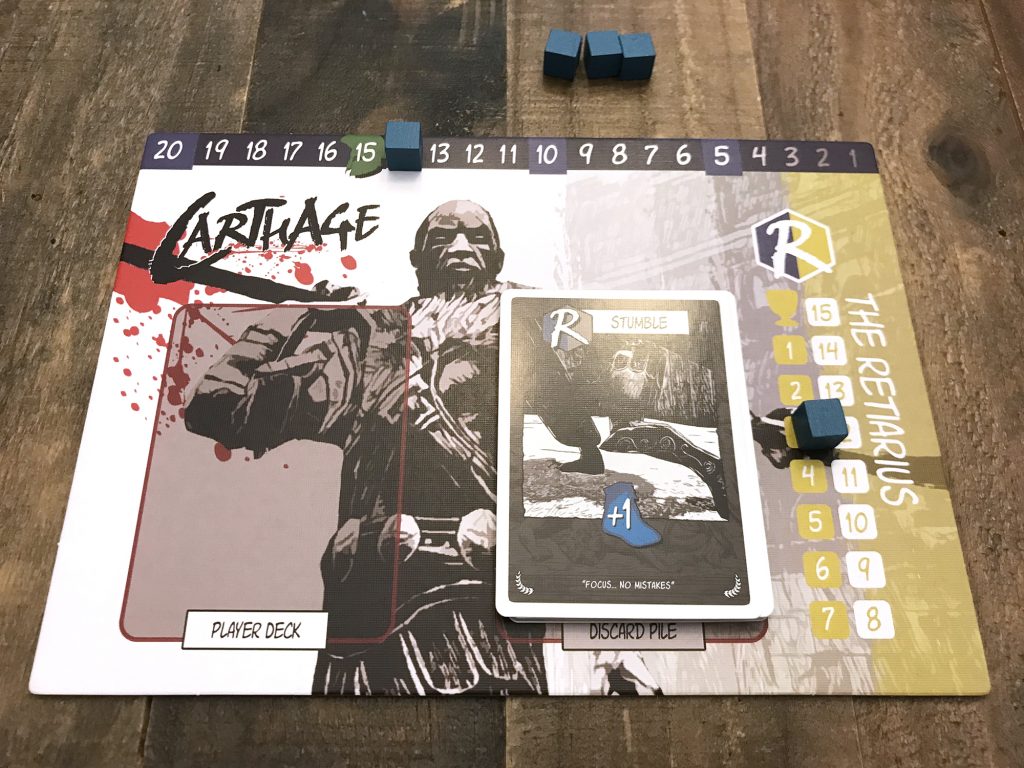
The game is broken into three phases of play; the Theater phase, the Action phase, and the Favor phase.
Theater Phase
The starting player flips the top card of the Theater deck, reads it aloud, and resolves the instructions on the card. These cards serve as twists in the game each round. Some cards will give players bonuses for accomplishing a specific feat or being in a certain position at the end of the round. Other cards hurt players for cowardly play like hanging on the outside of the ring. The crowd hates that. They see you over there turtling!
Action Phase
All players draw a hand of 5 cards from their draw pile. Then each player plays and resolves one card from their hand in turn order, continuing until all players have played their entire 5-card hand.
The cards revolve around 4 basic actions. Movement lets players move their mini the indicated number of hexes on the board. Armor lets players gain the indicated amount on their armor track to keep them in the fight longer. Attack lets players deal damage to an opponent’s armor, reducing it by the indicated amount. And Favor moves their favor cube up the corresponding track and gives you more opportunities to take actions in the upcoming Favor phase.
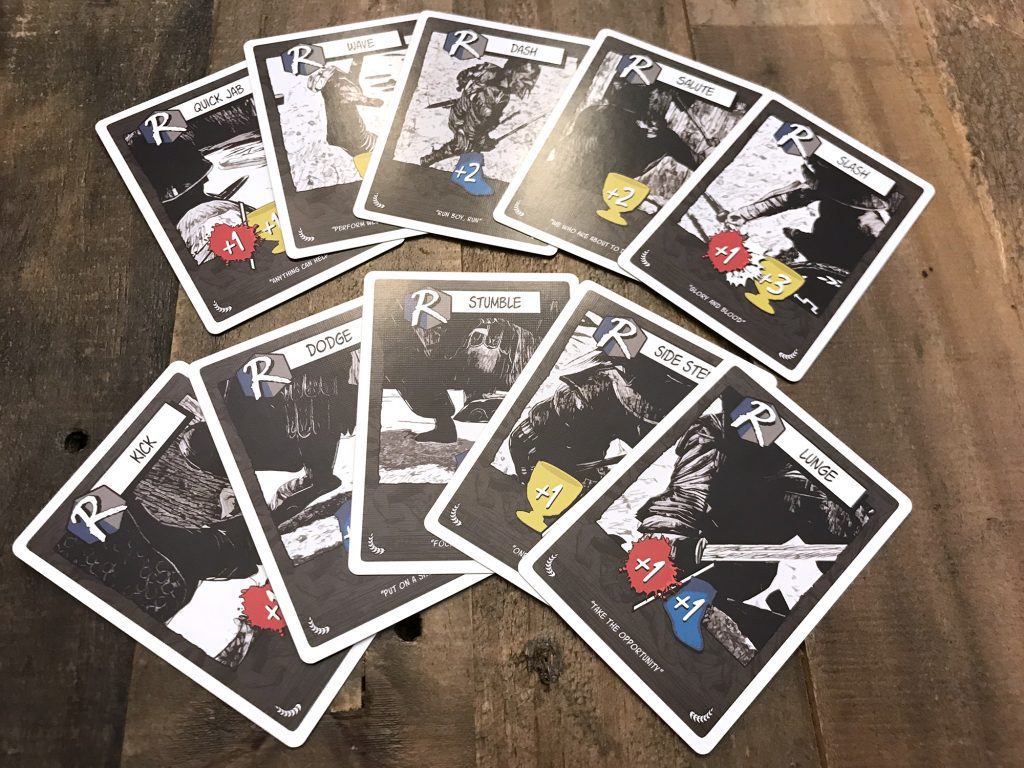
Your basic deck primarily has these actions split among the cards in simplistic ways. But as players start gaining more powerful cards, you can perform multiple effects on one card, like moving and attacking or gaining armor and moving. Some cards even have chaining effects; as long as you complete the first half of the card (often landing a successful attack) you gain a bonus on the second half of the card.
There are also tokens on the board that contain iconography for these same effects. When a player steps on these tokens they immediately trigger that effect, such as gaining armor, favor, or even a free attack if there’s an available target.
Favor phase
Players take turns spending the favor they gained in the Action phase to take a Favor action, which is most commonly buying new cards for their deck. To gain a new Action card, players spend the favor cost found in the upper left corner of the card. Generally, the more favor it costs the more powerful the actions a card provides. If players do not like the cards available for purchase they may Evaluate by spending 2 favor to wipe and replace the row of Action cards, and may immediately spend more favor to make a card purchase.

A gladiator will stumble in battle if their deck becomes unwieldy. Therefore players may spend 3 favor to Focus their deck and choose any card in their personal discard pile to remove it from the game. Players may also spend 1 favor to Initiate and take the first player token (which can only be done once per Favor round), and players may Lobby the crowd by digging through the Theater discard pile and placing one card back on top of the Theater deck.
Maximum Carnage
Carthage surprised me in how thematic it is, and at times feels like a modernized deck-building chess match. To play well, you need to manage your board positioning and anticipate the card plays of your opponents. On one turn you may decide to stay put and gain armor or favor because you hope your opponent will move a bit closer. This may allow you to strike them before they strike you. On another turn you may rush toward your opponent because you have a hand loaded with chaining attack actions, and you’ll finish the round with your favor boosts. The maneuvering, timing, and anticipation adds to the feeling that your miniature is really fighting for his life in combat.
I also enjoyed the thematic flavor on the cards. The names of the theater cards give you a sense of what kind of drama is happening in the arena. For instance, “Rain of Pebbles” immediately makes everyone lose 1 armor. Essentially the crowd is frustrated and starts stoning you! This is a fun one to Lobby back onto the theater pile if you want the game to quicken.
“Grotesque Finish” gives everyone a bonus +4 attack for being in the inner ring. This urges all players to end the round adjacent to an opponent to inflict a massive hit; a great option if you’re early in turn order. And where else can you play a game and learn weapon names that sound like snicker-worthy body parts (Scutum, anyone?).
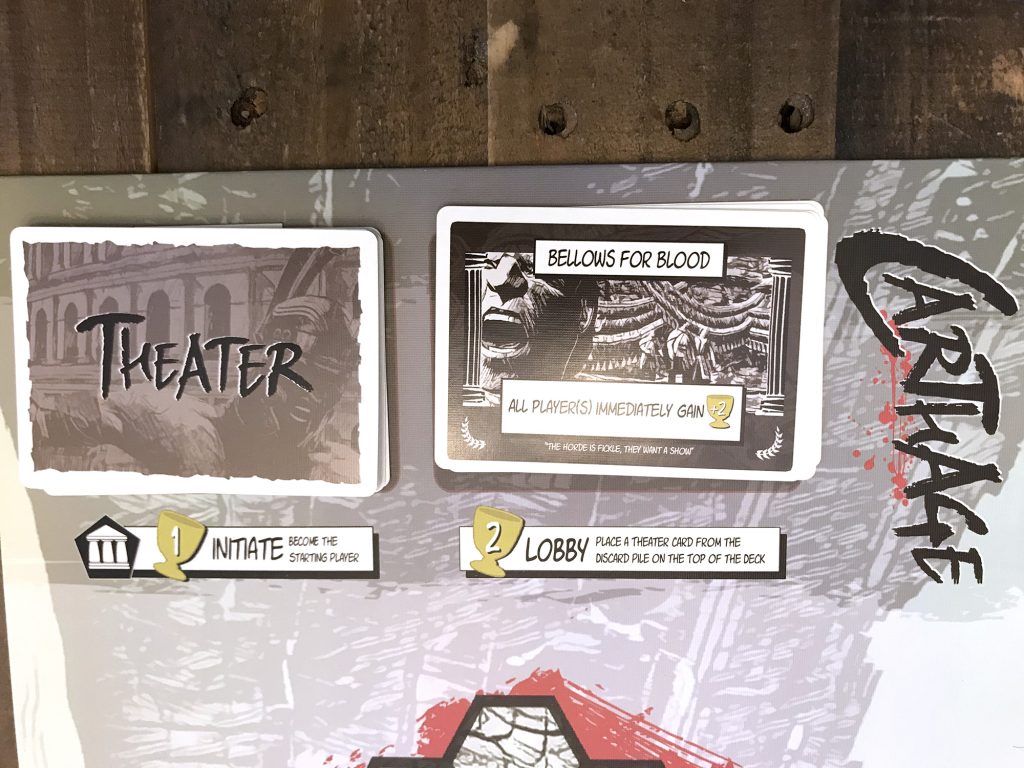
The box says “Easy to learn! Easy to die!” Both are true. I love the fact that this game is very easy to teach. Since most of the cards revolve around four streamlined actions (attack, armor, move, favor) it’s easy to start intuiting what each card does. Also, it really is easy to die. Especially if you stand in the center of the arena waving to the crowd while your opponents swipe at you with sharpened weaponry.
Carthage is also one of the most customizable board games I’ve played. Whereas many deck-builders rely on using changeable sets of cards for variation, Carthage uses one set of Action cards for all modes. However, once you’ve learned the base game, there are many more options waiting in Carthage’s armory. For example, you can customize the arena with tokens that you place on hexes, letting you place pillars which serve as obstacles, and spiked pillars which deal damage to players who move adjacent to them (whether voluntarily or Leonidas-kicked). There is also a deck of modular ruleset cards that create a more strategic and complex experience.
Once you’re done hacking apart each other on your neighborhood-friendly game night, you can compete side-by-side in 2 vs 2 and 2 vs 3 matches, as well 2 vs 2-chained (teammates are linked together with only one space allowed between them). Solo and cooperative modes are made possible via a free app that controls a legendary charioteer. If players want more asymmetry in their gladiators, they may add unique equipment cards to their character. And perhaps my favorite of all is the Mighty Beasts mode, where eliminated players can come back into the game as an animal on the rampage such as a tiger, lion, or rhino.
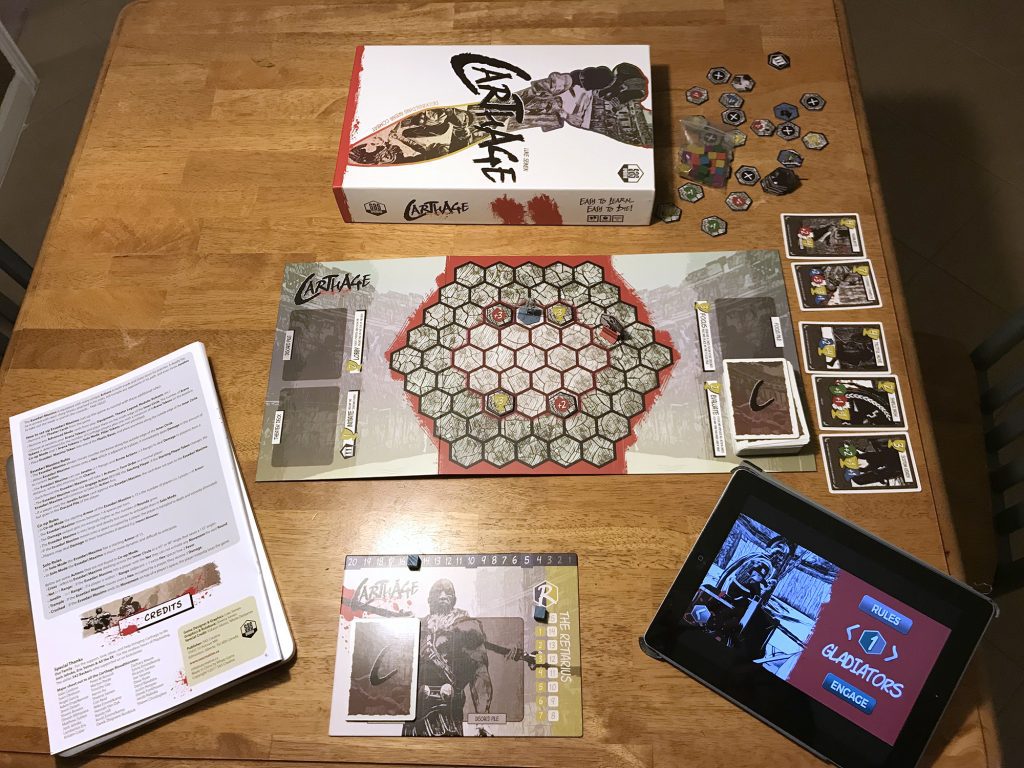
All of this adds up to a very meaty game that gives you a colossal amount of replayability for the cost. As someone who typically doesn’t enjoy elimination-style games, I found the game tempo to be quick enough to keep me invested and entertained as I sought my friends’ destruction. In a loving way.
Handle With Care
There were a few things that stuck in my sandal with Carthage. First, the miniatures are incredibly detailed, but they felt a bit thin. In the era of CMON plastic opulence, I’ve become used to hardy miniatures. One of our minis broke during a game (a sword fell off) and it was not due to rough play (I like to think the guy just preferred to go with a shiv). In a game where you are often required to move them multiple times a round, they need to have a bit more durability, which may be resolved on future printings.
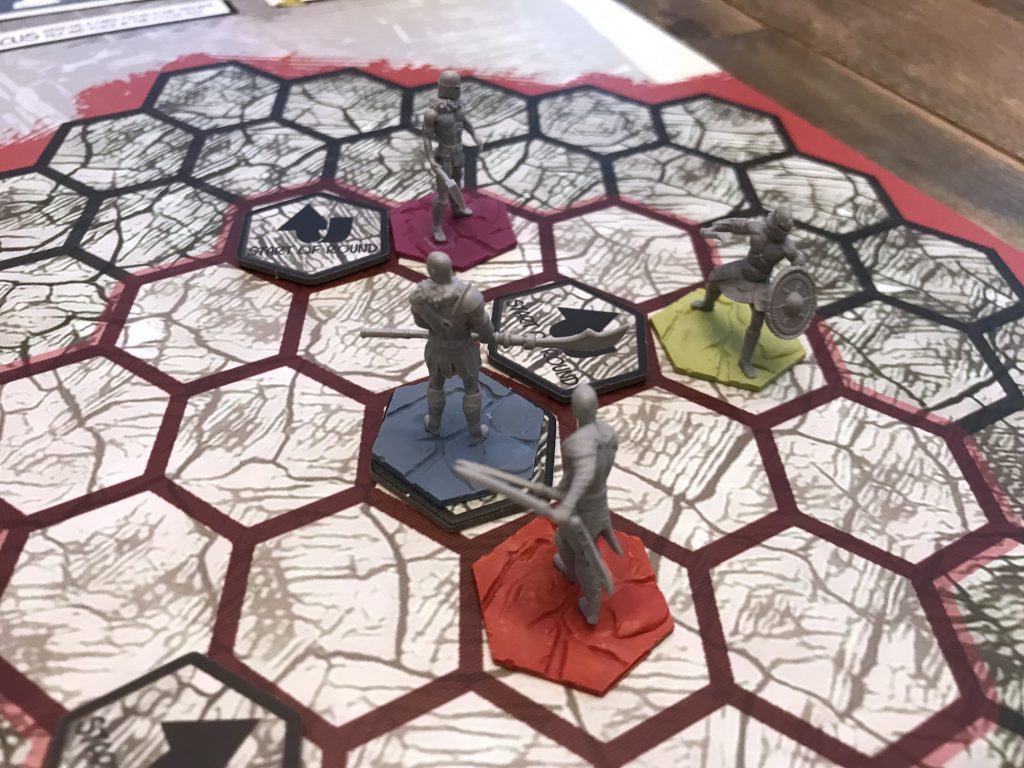
Some of the graphic design choices created minor complaints in my play throughs. Personally, I enjoy the artistic vibe of the game. It seems to be inspired by the 300 series of graphic novels by Frank Miller. The art is mostly black and white with a sketch-inked look; a bold and risky style that may not appeal to all gamers (some friends said they might not have picked up the game based off the monochromatic color schemes). Some of the art is so dark you can’t really tell what’s going on in the card.
This is also hampered by a large brown border that envelops the art. If the brown border were shrunk significantly, it would greatly improve the visibility of the drawings. The favor track is also unfortunately placed as it sits to the right of the discard pile. Because players are constantly discarding cards, pulling out cards from the discard, or picking up cards to shuffle, the cubes on the favor track can get bumped often. This is a minor complaint, and it can easily be fixed with recessed player boards or by moving the location of the favor track.
For some, the fact that this is an elimination game will be a turn off as well. If you are the first person out in a 4 or 5 player game, you will have to wait a while for your opponents to finish one another off. And since the game length is dependent on how aggressively players attack one another, it’s hard to know how long you may be waiting on the sidelines munching on your favorite board game snack… Cheetos! This is greatly remedied by the aforementioned Mighty Beasts variant. And at high player counts I’d even adjust the Mighty Beast rules to activate every time it’s a Beast-player’s turn, rather than just at the end of the round.
Aside from elimination, there could be minor issues if players decide on a highly defensive or evasive strategy. This isn’t a beauty pageant after all! Stop waving at the crowd and start swinging your curved sica (that is not a euphemism)!
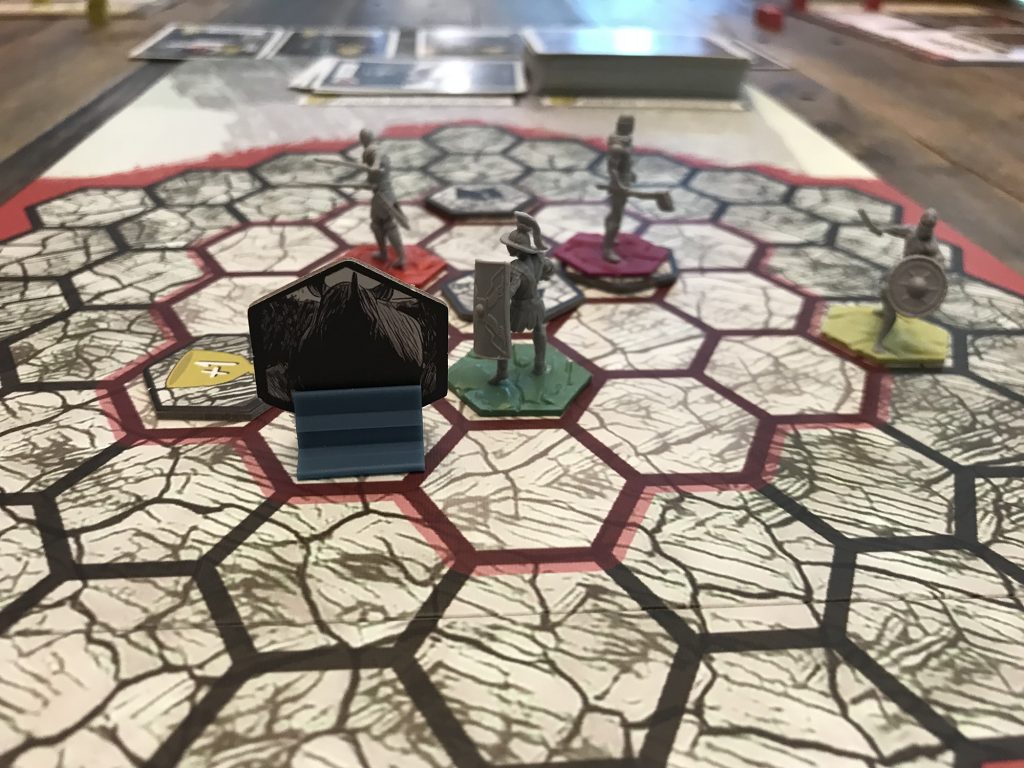
Swords, Sandals, and Solid Fun
The keen-eyed reader will note that none of these cons are significant to the overall gameplay. The game is solid as a parma (you might as well start googling). In fact, I was a little surprised at how smooth the interaction was between the deck-building mechanics and the gladiators-on-a-map gameplay. The cards and board work as seamless as your favorite toga, and once you’ve played you may find yourself dying to try all the modes the game has to offer.
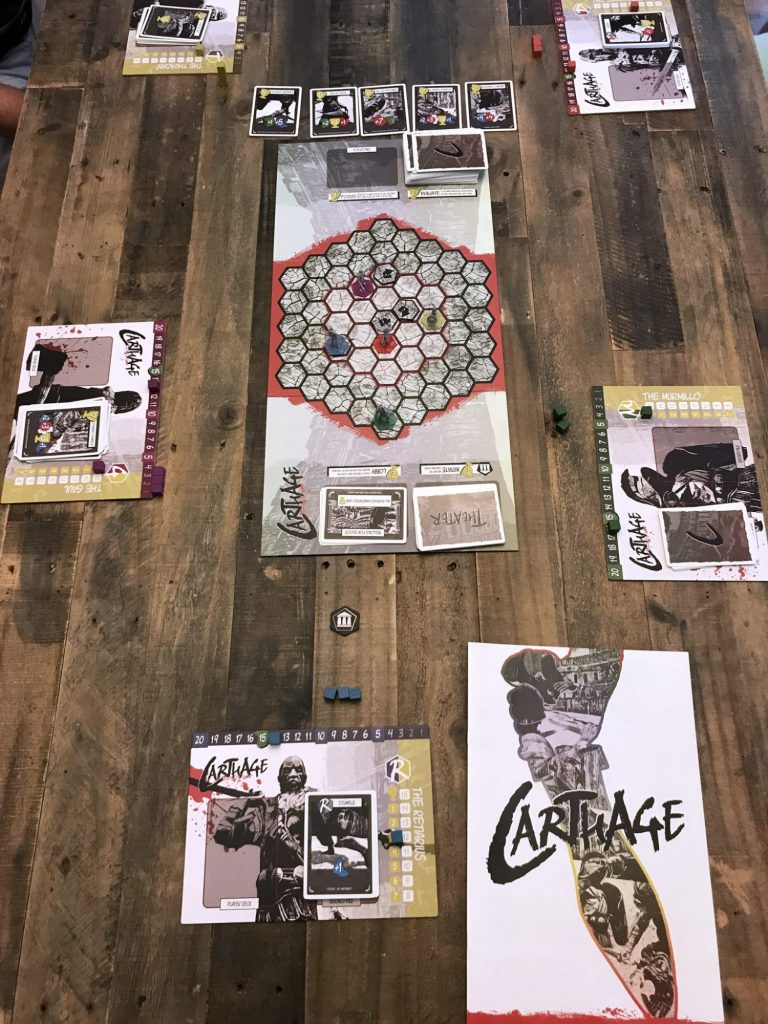
Chances are you’ll like this game if you enjoy aggressive deck-builders like Tyrants of the Underdark or Vikings Gone Wild. Take a stab at this if you enjoy combat-oriented games with minis. While it’s not overly complex, there is still a fair amount of strategy and tactics wrapped in a clean deck-building package.


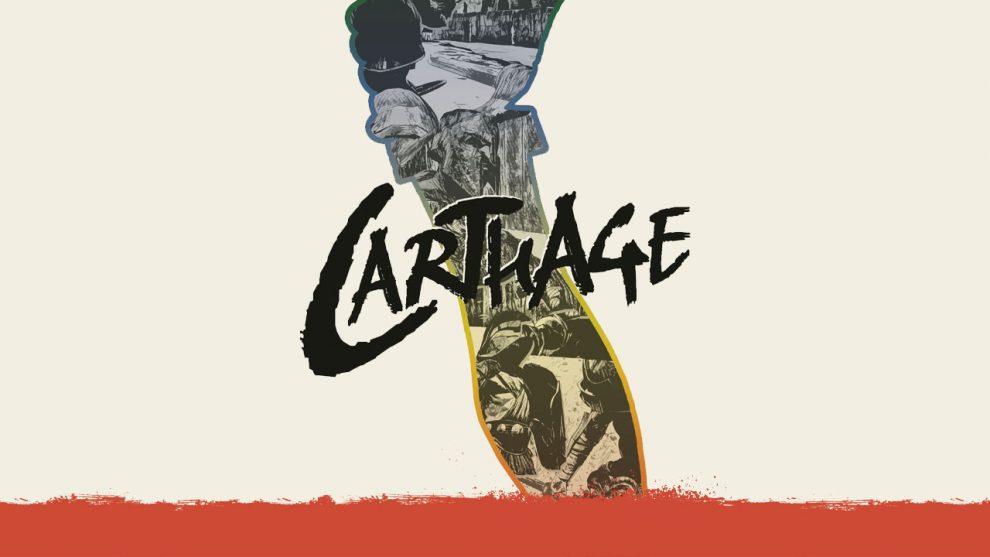



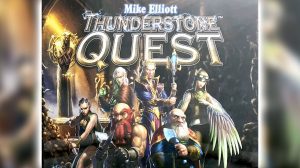




this guy is like the new Tom Vasel. Great Review